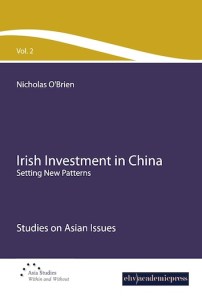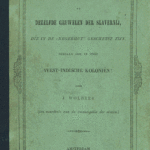Chapter 1: The Giant Arises ~ Irish Investment in China. Setting New Patterns
No comments yet Introduction
Introduction
The introduction of the ‘opening-up’ policy by the Chinese authorities in 1979 heralded an era of economic reform and ‘symbolised China’s sharp turn towards participation in the world market to speed to economic growth and technological modernisation’. (Riskin, 1987: 316) Since then, China’s economic story has been a remarkable success, growing on average over eight per cent per annum. Central to this economic success was the attraction of inward foreign direct investment. Such was the success of this policy that in 2003 China overtook the US as the largest global recipient of foreign direct investment (FDI), attracting $53 billion in that year (OECD, 2004).
On the other side of the globe, the Irish economy was also going through its own transformation. The 1970s and ‘80s were a period of high inflation, unemployment and the presence of large-scale emigration. In contrast, the 1990s was an era of unrivalled economic growth, with double digit GNP increases for most of this decade. Central to this transformation was the high level of inward FDI which Ireland attracted. Building on the strength of the economy, outward FDI continued to grow to such a degree that in 2004 Ireland became a net exporter of FDI for the first time.
Given the importance which both inward and outward FDI plays in economic development, the drivers and patterns of Irish FDI into the surging Chinese economy are worthy of examination. Barry et al’s (2003) seminal work on Irish outward FDI focuses on FDI into the US and UK, both of which are developed economies. Barry et al show that Irish outward FDI has been disproportionately horizontal (focused on replicating production facilities in third countries rather than moving an entire component of the production chain) and oriented towards non-internationally traded sectors.
Given the importance of China, as the largest recipient of inward FDI and the world’s second largest economy, it is opportune to explore the nature of Irish FDI into China and specifically whether or not the model identified for developed economies by Barry et al holds for Irish investment into China. ‘As Dunning (1997) has emphasised, full account must be taken of location factors, such as the structure of the host economy, the policies of the host government and the nature of local business culture, in explaining the comparative success and failure of FDI’. (Buckley and Casson, 1998: 27) However, ‘China’s size makes it different from nearly all other developing and developed countries’. (Eckaus, 1987: 117) It is important therefore for investors, policy makers and commentators on FDI to be conscious of the challenges and opportunities which China holds. While China displays the hallmarks of a market economy, it is a unique political economy. The State is still heavily involved in virtually all facets of economic life. In addition, China has a strong cultural tradition which places an emphasis on relationship building.
The author conducted research into Irish investment during the period 2006-2007 among the relatively small number of Irish investments in China. In the intervening period, the pattern of investment has not appreciably changed and the findings are still valid. The author had the good fortune to witness at first hand the rapid advances which the Chinese economy is experiencing over a four-year period. The rationale motivating this research is the importance of China in the study of FDI and the potential modifications to theory which China may necessitate, because of its status as a developing economy and its non-adherence to the Weberian concept of contract law.
Consideration of the nature of Irish investment in China also generates a sub-hypothesis. The literature review points to the challenges which the business environment poses, including the persistence of guanxi, and what Jones (1994) describes as the Rule of Relationships rather than Rule of Law. Therefore our sub-hypothesis asks if the investment environment in China poses particular challenges for investors who are accustomed to Western norms and if this is a pertinent fact to be considered when evaluating investment decisions. The nature of such challenges and their impact will be explored in order to evaluate whether or not investing in China is particularly different from investing in economies which Irish firms are more accustomed to. If the market is an inefficient allocator of resources, market imperfections are deemed to exist, because additional costs arise. (Mulreany, 1999) Should this be the case, economic theory holds that a role exists for public policy in overcoming such market imperfections.
The engagement or non-engagement of Irish firms in outward FDI is an important economic governance issue. If Irish firms do not engage and their European competitors do so, there is a risk that Irish firms will lose competitive advantage. ‘Increased openness to trade and factor flows increases international interdependence with important consequences for governance’. (Barry, 2006: 165)
Research Methodology
In conducting research on Irish investment in China, a combination of quantitative and qualitative research was utilised, with the latter dominating. As a means of obtaining first-hand accounts of the experience of investors in China and the associated challenges, research was conducted among three categories of executives – Irish firms which have invested in China (within the meaning of our definition of investment); selected non-Irish firms which have invested in China; and selected Irish firms which have invested in Eastern Europe. Semi-structured interviews were conducted to establish why they invested in China (or didn’t in the case of the latter group) and the challenges which they faced. This data, together with desk-based study, was analysed to allow conclusions to be drawn as to the validity of our primary hypothesis and sub-hypothesis.
As the objective of this research was to establish the perceptions and opinions of key business executives, the relevant data is inherently qualitative rather than quantitative. Quantitative research essentially employs some form of measurement, whereas qualitative research is considered to be the most appropriate form of collecting data on ‘experiences and processes – especially as understood by respondents themselves’. (Alcock, 2004: 57) While a qualitative methodology dominated during this research, limited quantitative analysis was also utilised, primarily in the identification of investment trends and patterns, as part of desk-based research. A note of caution needs to be sounded on the availability of reliable statistics on FDI. ‘There are gaps in the FDI statistics available from the source and host countries on FDI. Most countries do not publish comprehensive information on the foreign operations of their companies, for reasons of secrecy. Because of these problems, inconsistency between measure of FDI flows and stocks are the rule rather than the exception’. (Moosa, 2002: 2-3)
All Irish companies which have invested in China (with a holding of greater than 50% in their Chinese subsidiary) were selected for inclusion in this research. In the case of non-Irish MNEs which have invested in China, purposeful sampling was employed. The Irish Government’s Asia Strategy (Government of Ireland 2006) identifies eight sectors as having the potential to deepen their trade links with China. These industries were identified by the Government because of the strength of their Irish base of operation and as such can be assumed to possess ownership advantage, as described by Dunning, and possibly have the potential to invest in Asia. The eight sectors, as set out in the Asia Strategy, were analysed and four of these sectors were identified as having no Irish firm which has invested in China to date.
Executives of MNEs from these four sectors (telecoms, financial services, education and healthcare) were included in this research in order to identify the experience of investors and relate these findings to the Asia Strategy. A further four MNEs were identified because of the hi-technology nature of their industry, a high susceptibility to intellectual property violation, the strength of the industry in the Irish economy, and a consumer products MNE. In addition, consultations were held with a consultancy company which assists in the setup of MNEs in China, and with representatives of two leading Chinese law firms.
As a means of gaining an understanding of the relatively low number of Irish firms which have invested in China to date, analogous situations were considered to assess if a comparative dimension could be introduced. In the recent past, Eastern Europe was presented as a low-cost, high market-potential destination for FDI. ‘[EU] Enlargement will also bring forth new investment opportunities for EU15 firms’. (Barry, 2004: 829) One might assume that firms which have already invested in Eastern Europe would also be attracted by the prospect of investing in China, given the strong locational advantages which China offers. Accordingly, a selection of Irish MNEs which have invested in Eastern Europe were selected for inclusion in this research.
The study of the perceptions of business elites on investing in China does not lend itself to a narrow scientific study with its associated definitive findings. Based on the information available on inward FDI into China and the limited information on Irish outward FDI, a decision was taken to use a qualitative approach through the medium of semi-structured interviews.
The questions around which the semi-structured interviews were conducted were formulated with reference to issues identified during the literature review and areas of specific study in this research. The core research was conducted among executives of MNEs which have invested in China, supplemented by the views of those which have invested in Eastern Europe but not in China.
Outline
Consideration of Irish investment in China will be located within the context of investment theory. Accordingly, chapter two examines the seminal literatureon foreign direct investment and sets out an appropriate model of investment theory within which this research shall be considered. The limited literature on Irish outward FDI is also considered, with specific emphasis on Barry et al’s model on Irish outward FDI.
Chapter three outlines the results of this research and emerging themes are identified. This allows conclusions to be drawn as to whether Barry et al’s model holds in the case of Irish FDI into China. It should be stressed that this is not in any manner a judgement on Barry et al’s model. Rather, it is a reflection on the nature of China as an emerging economy and the unique political economy which it enjoys.
Chapter four draws on the research to explore the opportunities and challenges which China represents. The principal locational advantages and disadvantages which China poses are set out. It is argued that the major potential which China represents for Irish investors lies in market opportunity rather than in low labour costs, an opinion which is supported by the relevant literature on FDI in China. The principal locational disadvantages are identified as existing in the regulatory, cultural and legal environments. This allows conclusions to be drawn on our sub-hypothesis, namely the challenges which China poses for investors.
Chapter five explores the nature of Irish FDI into China. The non-application of Barry et al’s model to China is discussed together with our prescriptive research question, namely the desirability of state involvement in outward FDI. This chapter also seeks to explain why Irish FDI into China is different from that in the traditional destinations for outward FDI.
The concluding chapter draws on previous chapters to identify conclusions which can be drawn. Key findings are highlighted and potential areas for further research suggested.
You May Also Like
Comments
Leave a Reply








